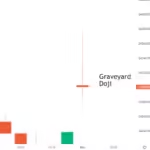In October, FIIs have sold positions worth more than Rs. 1,10,000 Cr. in the Indian Stock Markets while DIIs have bought positions worth Rs. 1,07,000 Cr.
FII Selling Pressure in October 2024
In October 2024, Foreign Institutional Investors (FIIs) sold equities worth ₹1,14,445.89 crore, leading to a sharp reduction in market liquidity. Domestic Institutional Investors (DIIs), however, countered this by buying shares worth ₹1,07,254.68 crore, preventing a deeper decline. A significant driver of the FII outflow is the “Buy China, Sell India” strategy. After China announced new economic stimulus measures, FIIs shifted their focus toward Chinese markets, seeking better returns. This shift reflects how international developments can directly influence capital flows in Indian markets.
How Do FIIs and DIIs Shape Market Sentiment and Volatility?
FIIs play a critical role in shaping market sentiment and influencing stock prices. When FIIs invest heavily in Indian markets, it is often seen as a vote of confidence in the country’s economic prospects, leading to bullish trends.
For instance, in November 2023, a wave of FII inflows sparked an exceptional rally in Indian equities. However, FIIs are also known to introduce volatility, as their rapid buying or selling can lead to abrupt price swings. Sudden FII withdrawals, such as those in June 2024, create market instability, often leaving domestic investors scrambling to stabilize the market.
DIIs, including mutual funds, insurance companies, and pension funds, act as a stabilizing force by purchasing stocks during corrections. They typically adopt a long-term approach, treating market downturns as opportunities to accumulate high-quality stocks at lower valuations. This dynamic between FIIs and DIIs plays a crucial role in maintaining market stability during turbulent periods.
Read more: FIIs and DIIs in India: Who Dominates The Stock Market?
Global Factors and the Path Forward
The FII withdrawal from Indian markets underscores the interconnectedness of global economies. Events such as China’s stimulus measures, the movement of U.S. interest rates, and fluctuations in global commodity prices often determine how FIIs allocate their funds. Additionally, the strong performance of the U.S. dollar and rising U.S. bond yields have made other markets more attractive, further contributing to FII outflows from India.
In the current environment, DIIs will play a crucial role in maintaining stability in Indian markets. With FIIs diversifying away from India in the short term, domestic investors may continue to accumulate shares at lower prices, positioning the market for recovery. Sustained DII participation will be essential to maintaining liquidity, mitigating volatility, and ensuring a smoother transition during global economic shifts.
Read more: What is Graveyard Doji – formed on Nifty’s Chart on Muhurat Trading





